GramCity: Photo Location Discovery Feature

Mobile App Feature Design Sprint
Designed a location discovery feature for GramCity’s photo editing app, helping users find Instagram-worthy spots in any city while building an active community of location sharers.
My Role: UX/UI Designer | 5-day Design Sprint | Solo Project
Strategic Challenge
GramCity already helped users edit photos for social media but wanted to expand their value proposition by helping users find the most photogenic locations in any city. The challenge was designing a feature that would create an active community of users who discover and share favorite photo spots while seamlessly integrating with the existing photo editing workflow.
5-Day Design Sprint Timeline
Day 1 | Map — User research analysis and user story mapping
Day 2 | Sketch — Competitor research and sketching solution ideas
Day 3 | Decide — Solution selection and storyboarding
Day 4 | Prototype — Build high-fidelity prototype
Day 5 | Test — Usability testing with 5 users
Research Foundation
Working with existing user interview notes, I identified key patterns in how travelers approach photo discovery. Users wanted to find great places to document their trips but didn’t want to spend excessive time searching or miss out on actual travel experiences. They needed to easily find locations and see examples of the best photo opportunities before planning their day around visiting them.
Key Insight: “How might we design a feature to help users find awesome places to take photos, wherever they are.”
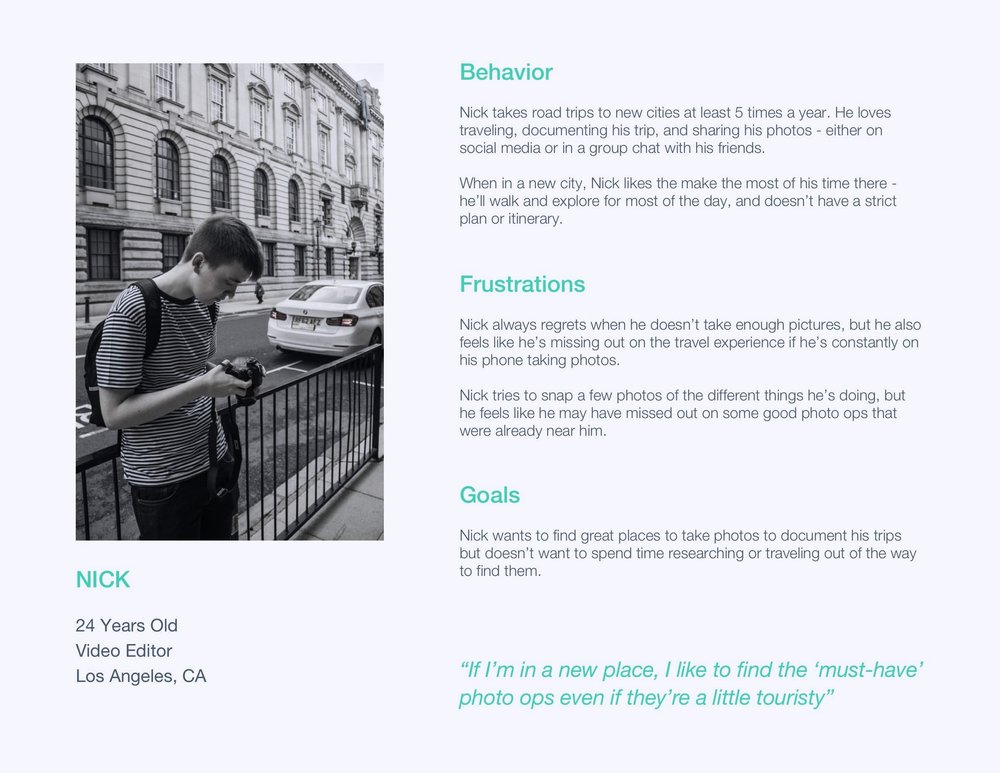
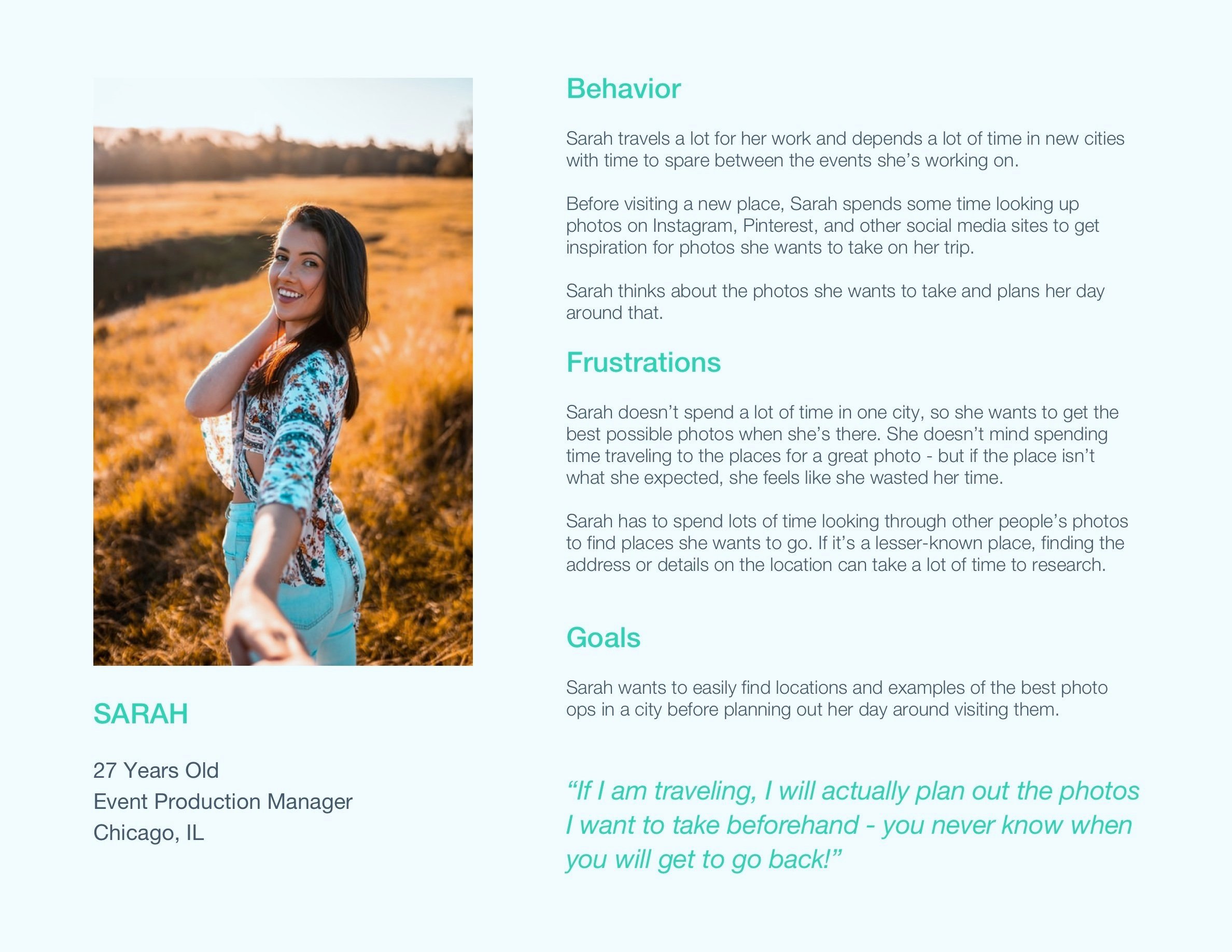
The solution focused on gathering user interests during app launch—tourist attractions, art, architecture—then navigating them to relevant photo locations with examples from other users. This approach enabled trip planning ahead of time and better decision-making.
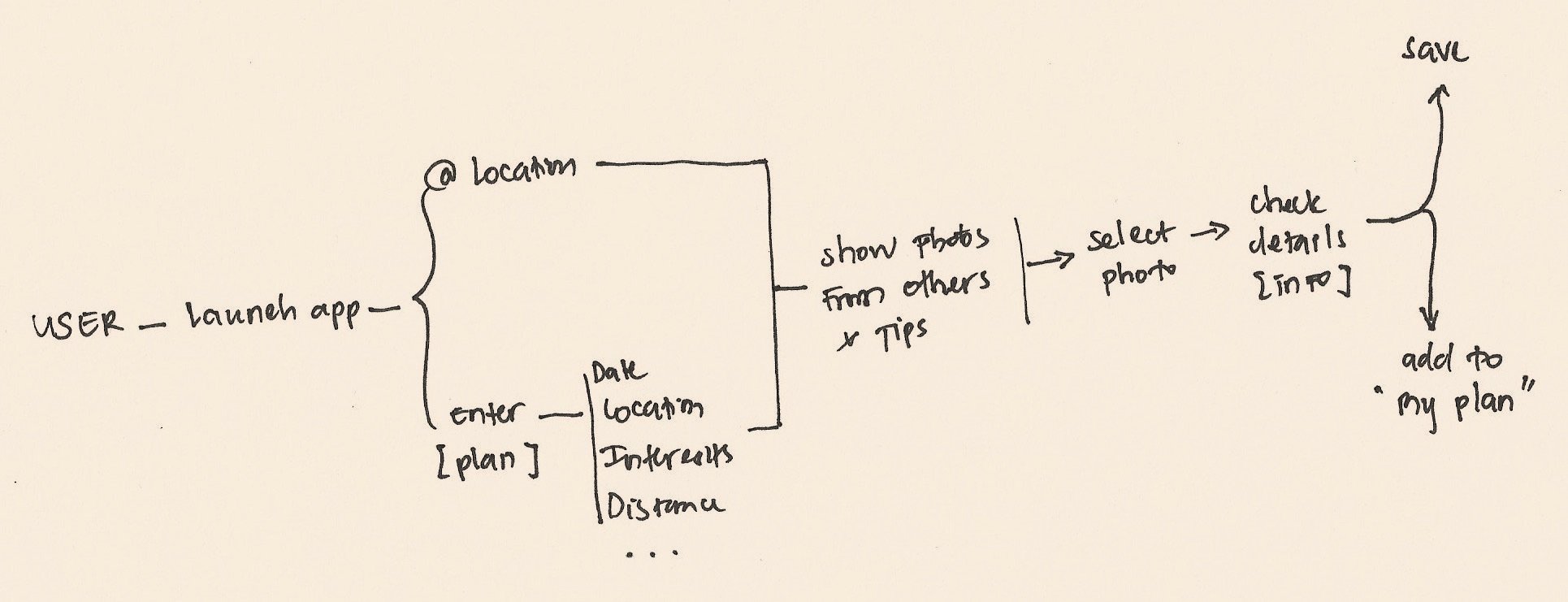
Design Process & Competitive Analysis
Competitive Research
I analyzed three key platforms to understand existing approaches to location and photo discovery, focusing on their strengths and limitations to inform our design decisions.
Explorest impressed with its clean, organized design that made location browsing feel effortless. The visual hierarchy effectively showcased destinations through high-quality imagery, and the interface felt intuitive for discovery-focused users. However, the platform lacked community features and user-generated content that could build engagement around shared experiences.
Instagram provided valuable insights into photo organization by location, demonstrating how users naturally associate images with places. The location tagging system worked well for content discovery, but the three-column mobile display felt cramped for optimal photo browsing. The platform excelled at showing real user experiences but made it difficult to get practical location information like hours or tips.
Yelp’s immediate map display and comprehensive rating system offered excellent patterns for location-based decision making. The combination of ratings, reviews, and practical information helped users quickly evaluate options. The community-driven content model created trust through authentic user experiences, though the photo presentation was secondary to text-based reviews and didn’t prioritize visual discovery.
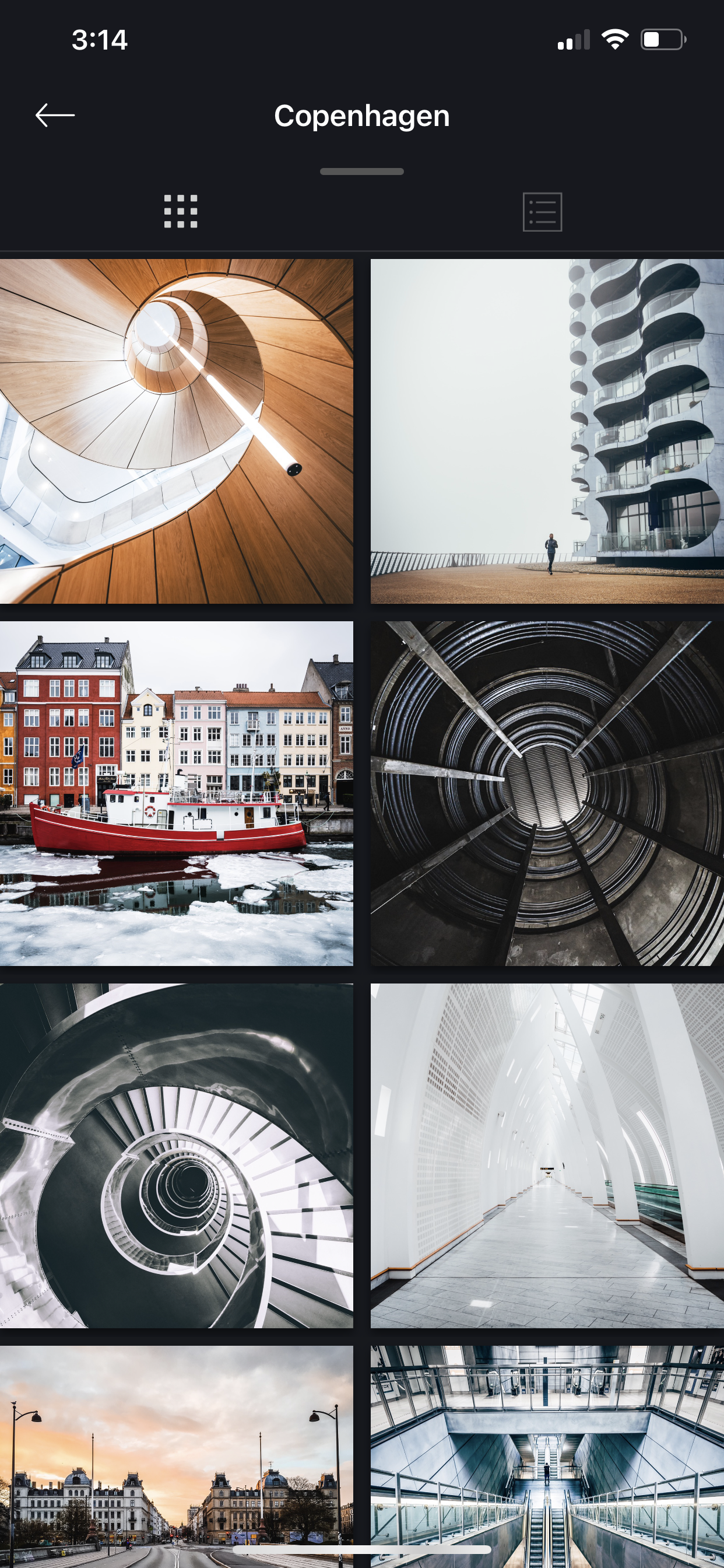
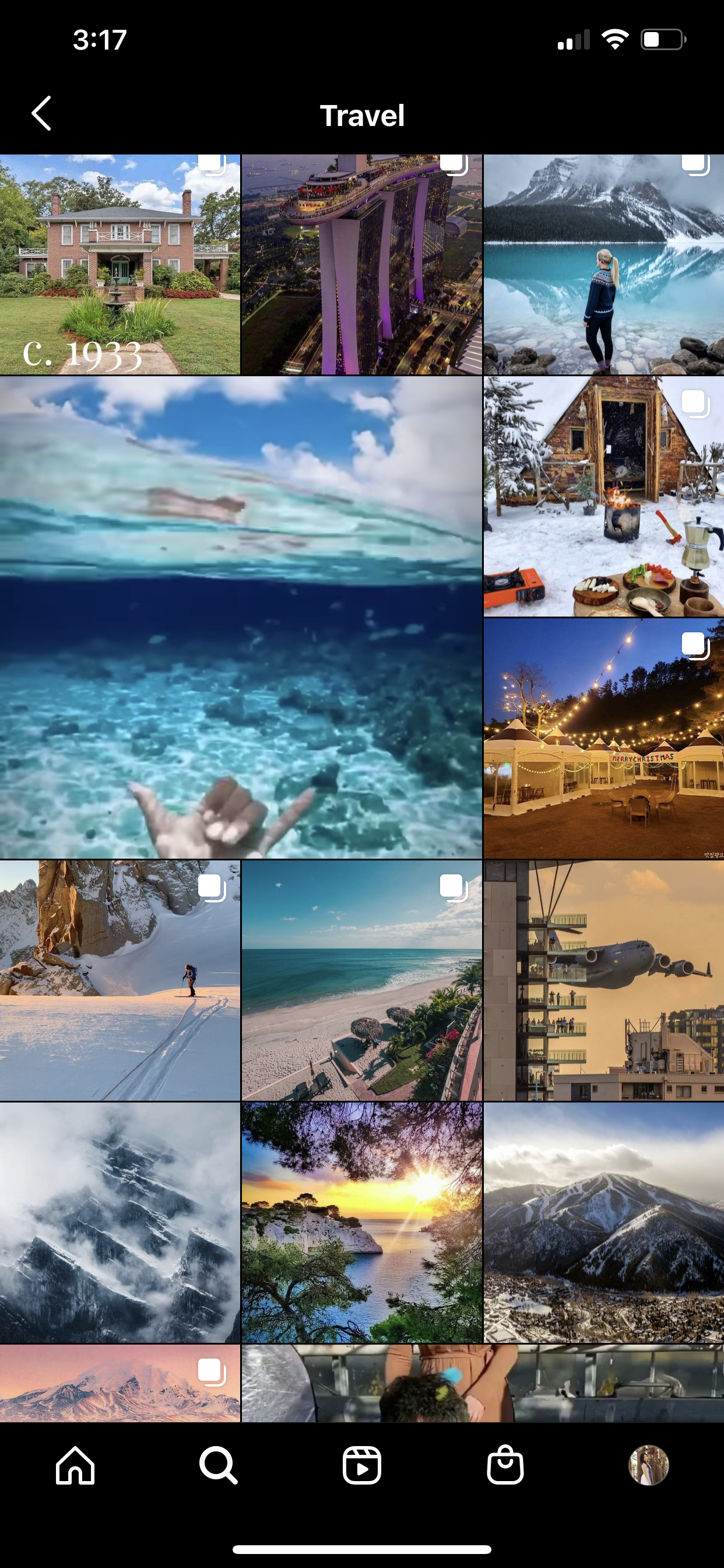
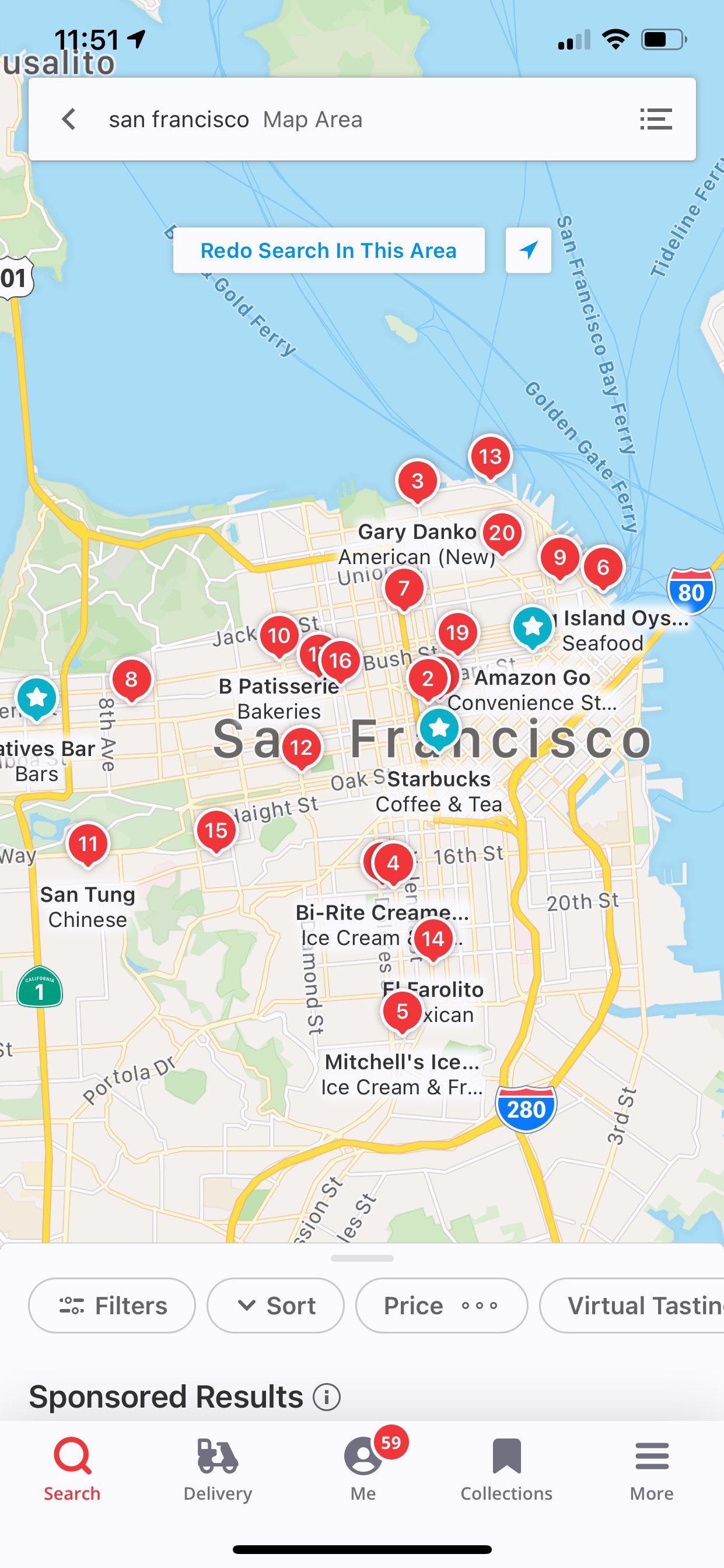
Crazy 8’s - 8 minutes, 8 slots, 8 designs
Through rapid sketching, I identified the “view photos” screen as most critical since users wanted to preview locations before visiting. This screen needed to effectively display photos while creating a sense of community engagement around shared locations.
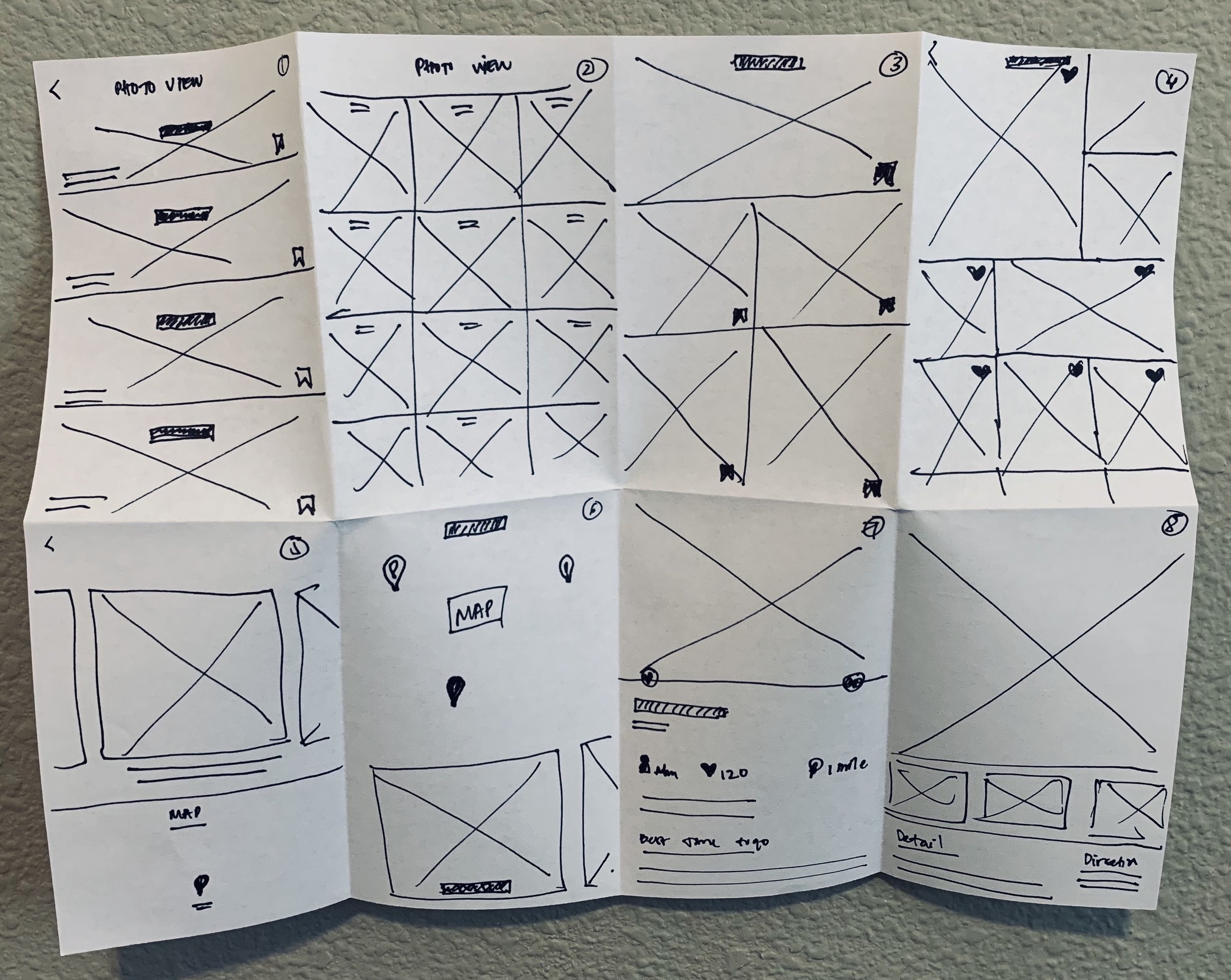
Solution Development

The final solution focused on a personalized approach where users indicate their interests during onboarding, then receive curated location recommendations with community photos. This enables advance trip planning while reducing search time.
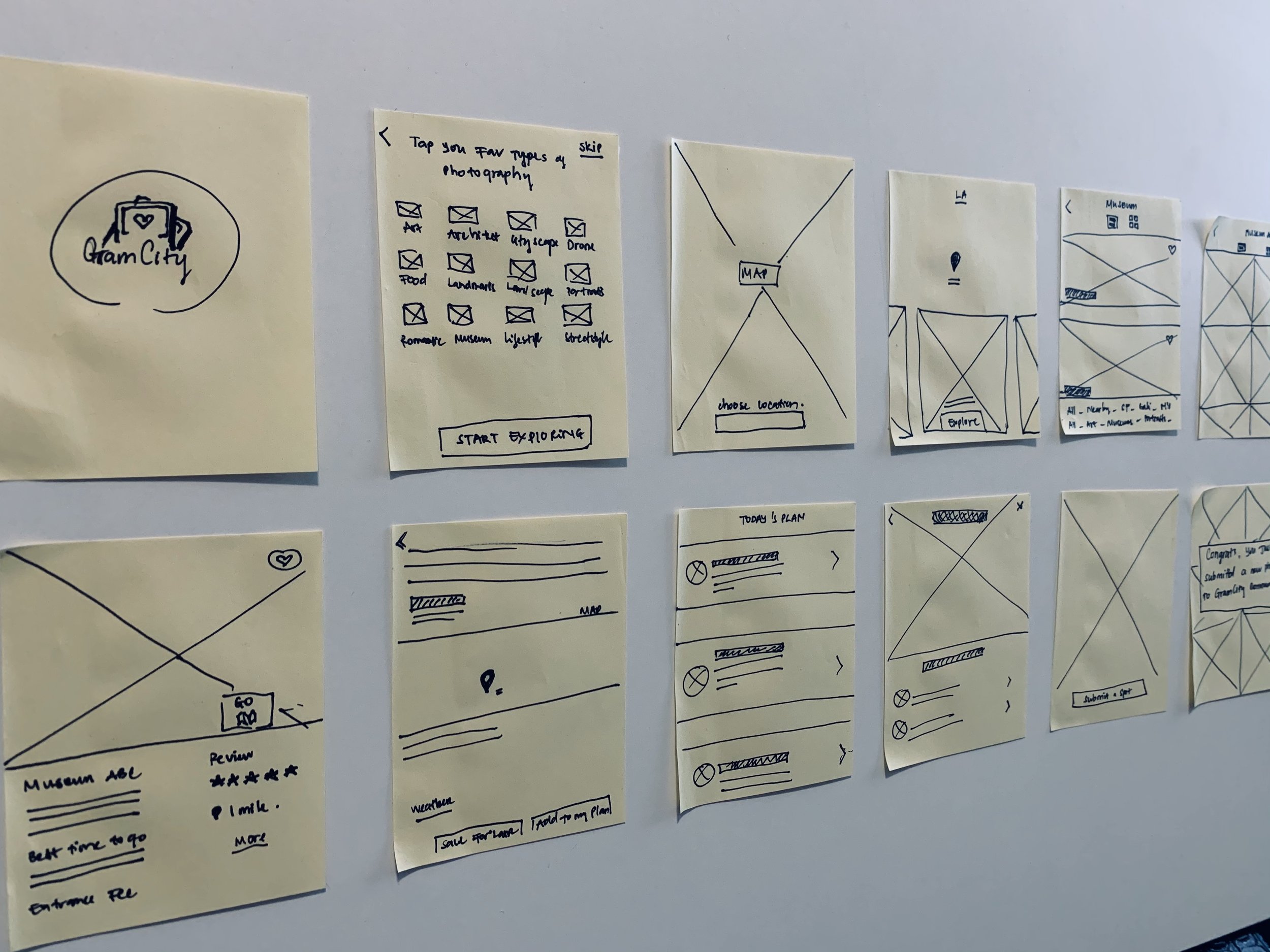
Prototype & Testing
Interactive Prototype Development
I built a high-fidelity prototype using Sketch and InVision, focusing on the MVP experience that would validate the core concept of personalized location discovery.
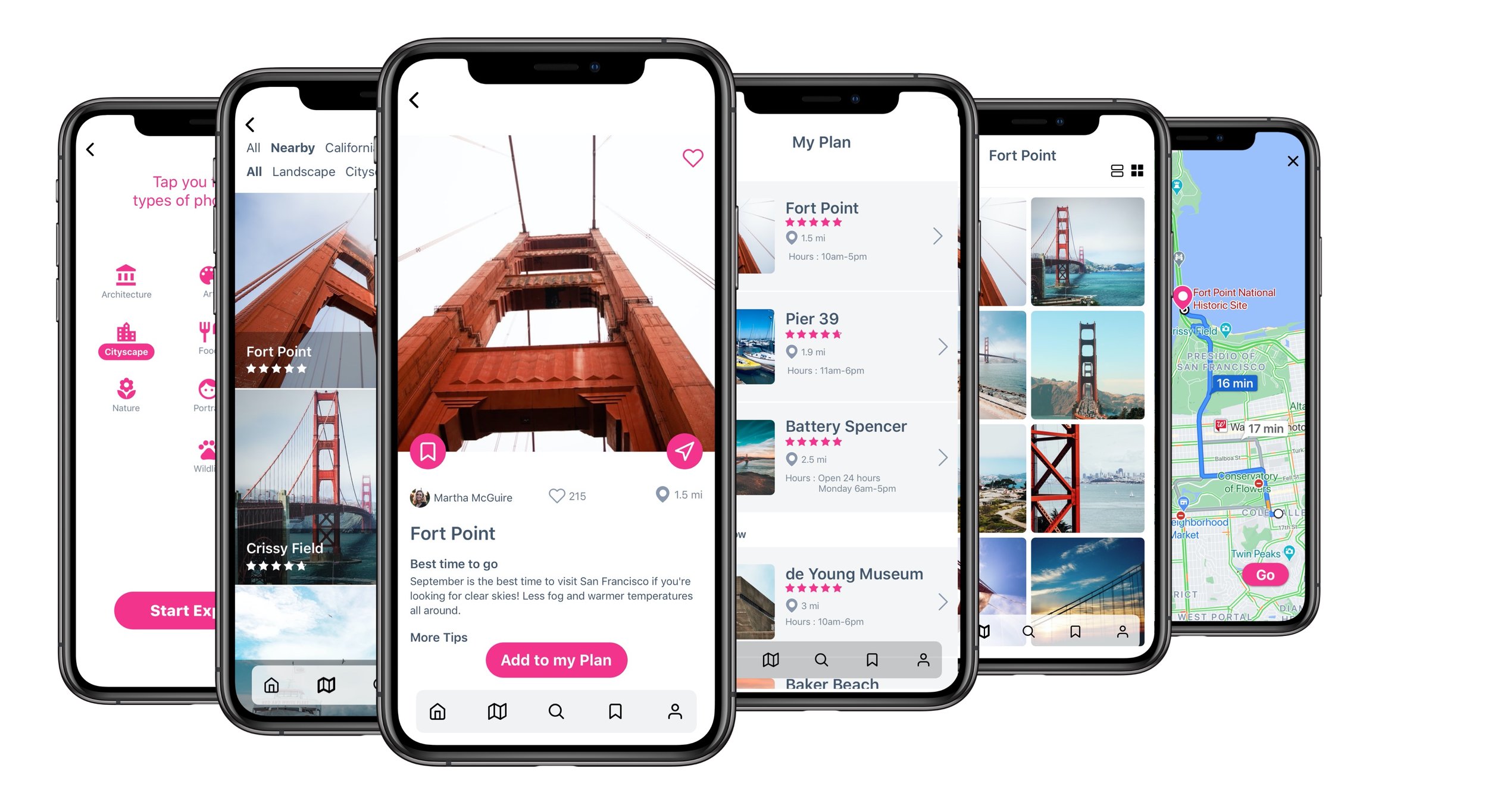
User Testing Results
Testing with 5 travel photography enthusiasts revealed strong positive reception for the personalized location discovery approach. Users appreciated the ability to see photo spots based on their preferences and valued detailed location information like hours and optimal timing. The trip planning functionality that allowed users to organize photo locations resonated well.
The main navigation challenge emerged around user preference for map versus photo gallery as the primary view, suggesting the need for customizable interface options.
Impact & Learning
This sprint demonstrated the value of rapid prototyping for testing feature concepts. The focus on user preferences and community-driven content proved effective for creating a differentiated location discovery experience. The biggest learning was maintaining focus on core functionality rather than over-engineering details during the sprint timeframe.

This project showcased how strategic feature design can expand an app’s value proposition by addressing adjacent user needs while building community engagement.